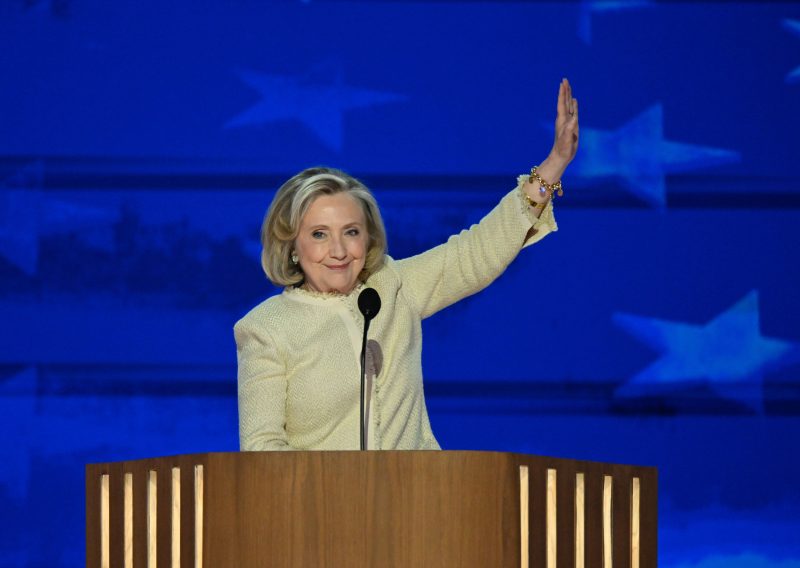
Two things are true. It is true that the Democrats’ position in national and state-level presidential polling has improved since Vice President Kamala Harris became the party’s nominee. It is also true that Harris is underperforming where Hillary Clinton was at this point in 2016 and that she is even underperforming the 2020 ticket on which she appeared with Joe Biden.
Oh, and there’s a third thing: It is true that this probably doesn’t tell us much yet.
We can compare this year with past election cycles using the polling averages compiled by 538 (formerly FiveThirtyEight). It has a database of polling averages stretching back more than a half-century; we’ll focus just on the presidential elections since 2012.
You can see the national polling averages (and, for previous elections, final levels of support) for the Democratic and Republican candidates in each of those elections below. The last 150 days of the election are shown; we’re a bit more than halfway through that period in 2024. (The gray boxes on the charts in this article show the period that has elapsed in 2024.)
There are three things that probably jump out at you from the chart below. First, that support for both candidates generally increased as the election got closer. Second, that the Democratic candidates had much wider margins in 2016 and 2020 than in 2012. (In each election, the Democratic candidate earned more votes nationally, twice passing 50 percent. The Republican candidates never reached 48 percent.)
Third, the 2024 race shift dramatically after Biden stepped aside. Before then, he was static and Trump was climbing in the national average. After, Harris has soared while Trump flatlined.
A critically important (and unanswerable) question is whether the trend for Harris will continue. Will she see her support expand further? Or have we simply reached a point similar to that seen in 2016 and 2020, with the Democrat holding a national lead that doesn’t avoid close — and ultimately determinative — races at the state level?
We’ve typically been looking at this year’s anticipated swing states in two buckets: the states that adjoin the Great Lakes (Michigan, Pennsylvania and Wisconsin) and those in the Sun Belt (Arizona, Georgia and Nevada). So we’ll do that again, starting with the Sun Belt.
What you will notice here first is that, in Arizona and Georgia, the margin between the dashed lines, showing the final results, narrowed from 2012 to 2016 and then flipped in 2020. In Arizona and Georgia, the Republican candidates had big leads in 2012 and 2016 and won those states. In 2020, though, the race was close in Georgia at this point while Biden had a big lead in Arizona. Biden won both states narrowly.
What also stands out is that Nevada doesn’t look the same as those other states. Polling at this point has ranged over the past three cycles, from a one-point Democratic lead in 2016 to a seven-point one in 2020. In those two elections, though, the Democrats each won by about the same margin.
In the Great Lakes (a.k.a. the “blue wall”), the narrowing occurred between 2012 and 2016, then shifting back to the Democrats in 2020. In all three states, though, the Democrats had leads at this point in 2012, 2016 and 2020. In 2016, Clinton lost all three.
What is harder to pick out on those charts is how Harris is faring relative to the three previous Democratic nominees. Nationally, Harris’s lead is larger than Obama’s in 2012 but smaller than Clinton’s or Biden’s. She’s mostly faring better than Clinton and Obama in the Sun Belt, but only doing better than Biden was at this point in Georgia. In the Great Lakes states, she’s faring worse than Clinton and Biden were at this point in all three.
Of course, as you undoubtedly know, the state polling averages in those states were notoriously off them mark in previous contests. Nationally and in these six states, Obama’s results beat the final polling averages by 2.4 points on average. Clinton, though, underperformed by an average of 2.5 points and Biden underperformed by 3.7 points.
That’s an important caveat, too: If polls are off the mark to the extent that they were in the prior two presidential contests, Harris underperforming Clinton and Biden becomes that much more problematic. If the polls for some reason miss the way they did in 2012? Very different story.
The analysis above also centers on the six states that flipped in 2016 or 2020. There’s another state that seems as if it might be worth considering here: North Carolina, which the Cook Political Report just moved from “lean Republican” to “toss-up.” There, too, the Democrats had modest leads at this point in 2016 and 2020 but ended up losing. Harris is faring far better than Biden but still tied with Trump.
Even in North Carolina, though, the switch from Biden to Harris meant a surge for the Democrat and Trump treading water. It’s not clear that the surge is over or lasting. It’s hard to know how the race will shift further as voters increasingly make up their minds about who they plan to support.
We can say with certainty, though, that the two truths with which this article began remain true. The Democratic position is much better than it was a month ago, but it’s not better than it was four years ago.



